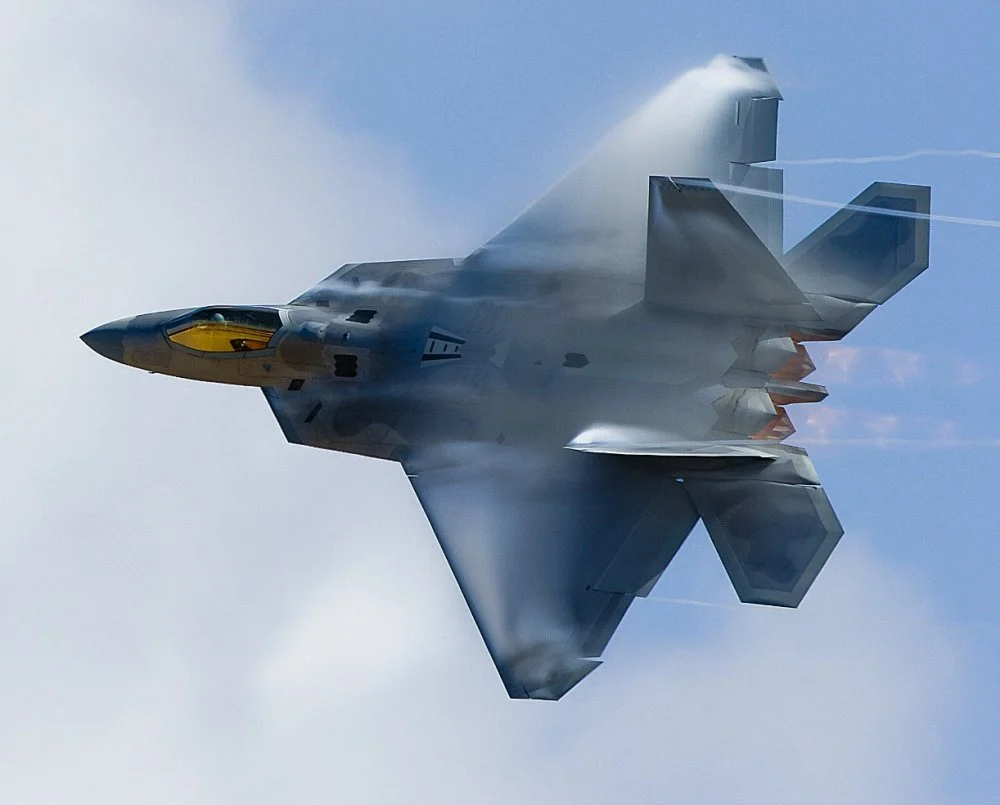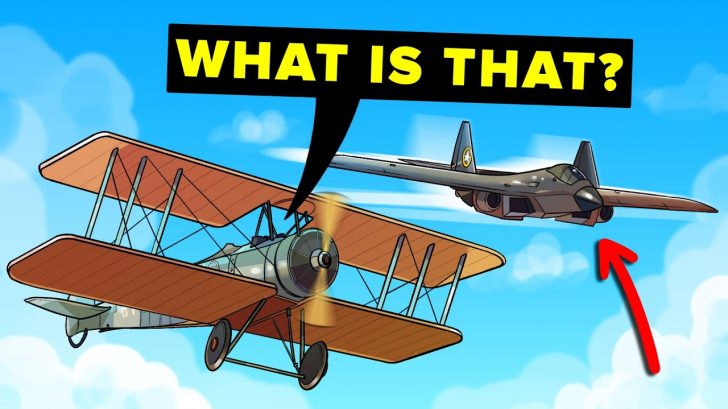What would happen if the deadliest fighter aircraft ever built went back in time to participate in the First World War?

Generations Ahead
With a thunderous roar, the F-22 would announce its presence above the trenches of war-torn Europe. And with the ability to supercruise without afterburners, the F-22’s supersonic boom would have left hundreds – and even thousands of troops stunned. With a “silvery” skin, a “golden” cockpit, and a delta wing body, it’s safe to say that the F-22 is generations ahead of anything the countries had flying at the time.
A Prima Donna?
The plane has great difficulty in maintaining the stealth coatings which makes it so formidable, and daily maintenance is required to make sure it’s still effective. The sensitive stealth coating wouldn’t matter as much though since nobody was using radar at the time.
Still, its computer systems are indeed powerful, but this would be of no use as it is incompatible with the rest of the air force’s technologies.
Not to mention, flying it would cost a fortune! For just an hour of flight time, the Raptor has an estimated cost of over $85,000 in fuel and maintenance.

Technological Gap
The Raptor would be as immediately confounding to even the brightest minds of the time. Back then, the internal combustion engine had only been small enough to mount on an airplane for about a decade – and that’s still decades behind the piston engine aircraft of the 1940s.
At best, the plane could be flown until it basically fell out of the sky from disrepair. If that wasn’t the problem, then it probably will be the fuel.
F-22s need a carefully calibrated mix of jet fuel, a result of decades of research, which is much more energy-dense than regular petroleum or gasoline. It’s safe to say that nobody is capable of fueling this beast, so its operators might just get a few hours of flight time in total.
But let’s say that everything worked out perfectly – the engines running, the airframe maintained, and the fuel topped up to the fullest.
How much damage could it do?
Turns out, nothing much.
The most immediate problem is the fact that the F-22 might not even be able to keep up with German Fokker VIIs. Fokkers had a top speed of 116 mph – that number is way too small for an aircraft like the F-22. Don’t get us wrong, the Raptor will absolutely destroy the Fokkers, but it might also stall if it performed any sort of dogfighting maneuver.
If the Raptor was to attack, it would have to resort to attacking from above in short strafing runs. However, this is also a problem since the Raptor only has a few seconds worth of ammo against a very agile Fokker. That’s usually a great quality to have, especially when you’re trying to take down a supersonic fighter!

Made For A Different Era
Now with no ammo in hand, the Raptor is basically done for. Without the advanced gunpowder used by modern ammunition, the Raptor’s cannon would not be able to work properly.
The F-22 technically still has its two AIM-9s and six AIM-120s, but it might find it harder to lock on to some planes. Aircraft at the time were made from wood and canvas, things that radars aren’t very good at locking onto.
Unable to accurately target enemy planes, with only a few hours of flight time available, and construction so advanced it’s impossible to replicate or repair it, the F-22 would ultimately have close to zero impact on the war.



